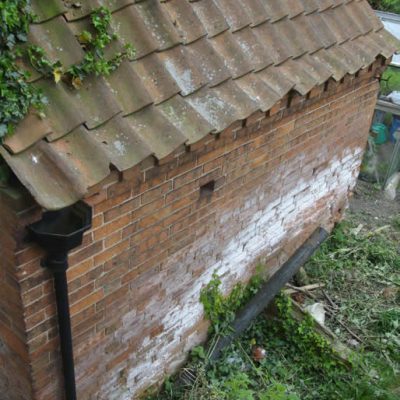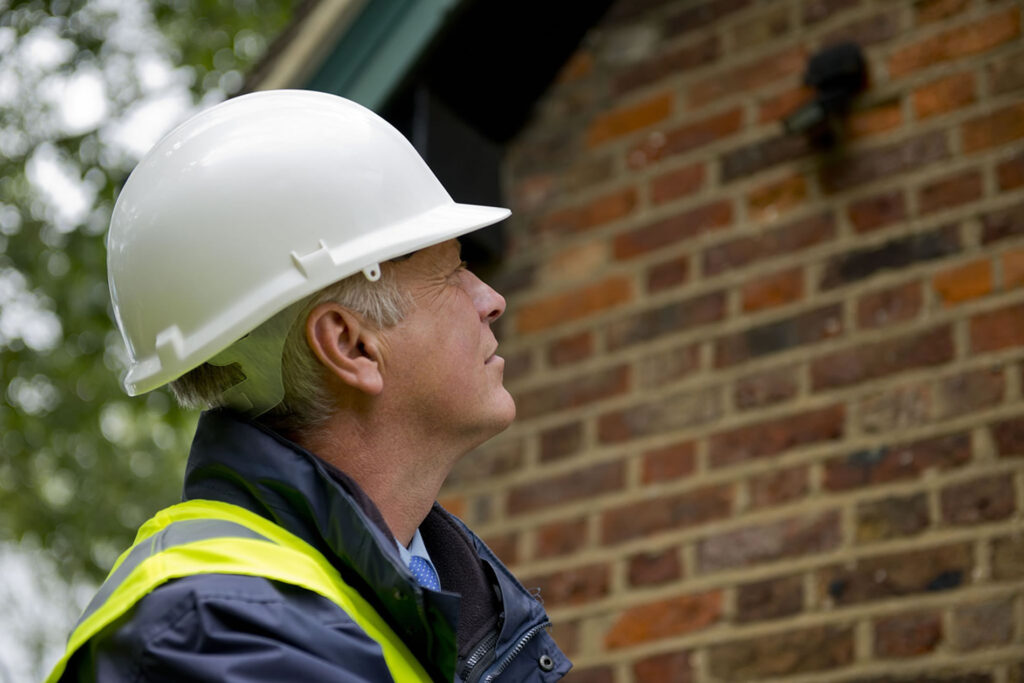


The United Kingdom’s climate is undergoing significant transformations, marked by increased rainfall patterns attributed to climate change. These shifts profoundly challenge urban infrastructure, particularly in rainwater management systems. Among the critical components of such systems, gutters and downpipes play a pivotal role in directing rainwater away from buildings and preventing water damage. In this article, we delve into the importance of specifying the correct size gutters and downpipes in the UK’s evolving rainfall patterns. We explore the implications of climate change on precipitation, the necessity of proper sizing for effective rainwater management, and the risks posed by incorrect gutter sizing, particularly to period and listed buildings. Moreover, we discuss strategies for mitigating water damage and fostering resilient rainwater management practices in the face of climate uncertainties.
The United Kingdom’s climate is experiencing significant shifts in rainfall patterns due to climate change. Increased frequency and intensity of rainfall events have become a defining feature, leading to challenges in managing excess water and mitigating flood risks. These changes are attributed to various factors, including rising global temperatures, atmospheric circulation patterns, and alterations in weather systems. The increasing variability in rainfall affects water resources and has broader implications for agriculture, infrastructure, and ecosystems. Understanding these shifts is crucial for developing effective adaptation and mitigation strategies to cope with the evolving climate.
Historical weather data and climate models reveal a clear trend towards more frequent and intense rainfall events across the UK. The UK Met Office reports that extreme rainfall events once considered rare, occur increasingly regularly. This shift has significant implications for flood risks, water management strategies, and environmental resilience.
These changes in precipitation patterns are driven by various factors, including rising global temperatures, which increase the atmosphere’s capacity to hold moisture, and shifts in atmospheric circulation patterns. Consequently, heavy downpours are becoming more intense, and prolonged periods of rain are more frequent.
The increasing prevalence of extreme rainfall events necessitates re-evaluating current infrastructure and flood defence mechanisms.

Communities, policymakers, and planners must adapt to these new realities by implementing more robust water management strategies, enhancing flood protection measures, and improving early warning systems to mitigate the impacts of these climatic shifts.
The changing rainfall patterns due to climate change present significant challenges for urban infrastructure and planning. Ageing drainage systems, initially designed for historical rainfall patterns, may struggle to cope with the increased volume and intensity of water. Urban areas, characterised by large expanses of impervious surfaces like roads, parking lots, and buildings, face heightened risks of surface water flooding and overwhelmed drainage networks.

These conditions can lead to frequent and severe flooding, posing threats to public safety, property, and urban areas’ overall functionality. Consequently, there is a pressing need to reassess and upgrade rainwater management infrastructure to adapt to these changing climate realities. Solutions may include implementing green infrastructure, such as porous pavements, green roofs, and rain gardens, which can help absorb and manage excess rainwater.
Urban planning must also incorporate climate resilience strategies, including redesigning drainage systems, enhancing flood defences, and developing policies promoting sustainable water management practices. These efforts are essential to safeguard urban environments against the growing challenges posed by altered rainfall patterns.
Effective rainwater management relies on properly sizing gutters and downpipes to accommodate increased flow rates associated with intensified rainfall. Oversized or undersized gutters and downpipes can lead to inefficient water drainage, exacerbating the risk of water damage to buildings and surrounding areas.
Matching Gutter Capacities with Increased Flow Rates
As rainfall patterns evolve, matching gutter capacities with the expected flow rates is essential to ensuring efficient water removal from roofs and surfaces. Oversized gutters can lead to water overflowing during heavy rainfall, while undersized gutters may not cope with the volume of water, resulting in water pooling and potential structural damage.

Ensuring Adequate Drainage for Effective Rainwater Disposal
In addition to gutter sizing, the sizing and placement of downpipes are critical factors in rainwater management. Downpipes should be strategically positioned to facilitate the swift and efficient removal of water from gutters to drainage systems or collection points. Adequate drainage capacity is essential to prevent water accumulation and reduce the risk of flooding, particularly in areas prone to heavy rainfall.
Period and listed buildings are cherished architectural treasures that require special care and attention to preserve their historical integrity. However, these buildings are particularly vulnerable to water damage caused by inadequate rainwater management systems, including incorrectly sized or damaged gutters.
Recognising Water Ingress as a Major Threat to Building Integrity
Water ingress, resulting from poorly functioning gutters and downpipes, poses a significant threat to the structural integrity of period and listed buildings. Excessive moisture infiltration can lead to various issues, including dampness, rot, and decay of timber structures, as well as deterioration of masonry and plasterwork. Furthermore, prolonged exposure to water can weaken building materials and compromise the stability of foundations and load-bearing elements.

Assessing the Damage to Interior and Exterior Structures
The consequences of water ingress extend beyond visible damage to the interior and exterior of buildings. Internally, water infiltration can cause unsightly stains, peeling paint, and mould growth, posing health risks to occupants. Externally, compromised gutters and downpipes can result in erosion of brickwork, staining of facades, and damage to decorative features, detracting from the architectural beauty of the period and listed buildings.
Preserving Architectural Heritage through Proactive Maintenance Strategies
Preserving the structural integrity and aesthetic appeal of period and listed buildings requires proactive maintenance of rainwater management systems. Regular inspection and maintenance of gutters and downpipes are essential to promptly identify and address any issues. This includes clearing debris, repairing leaks, and ensuring proper alignment and functioning of gutters and downpipes. Additionally, durable cast iron gutters can enhance the longevity and performance of rainwater management systems while preserving the historical character of the building.
To mitigate water damage and ensure effective rainwater management, it is imperative to implement strategies for selecting and maintaining gutters and downpipes. These strategies encompass regular inspections, consulting experts for correct sizing and installation, and utilising modern materials and technologies for enhanced durability and performance.
Conducting Regular Inspections and Maintenance Checks
Regular inspection and maintenance of gutters and downpipes are fundamental to identifying and addressing issues before they escalate into costly repairs or structural damage. Inspections should include checking for blockages, leaks, corrosion, and damage to gutter joints and brackets. Additionally, gutters should be cleaned regularly to remove debris, leaves, and other obstructions that impede water flow.
Consulting Experts for Correct Sizing and Installation
When installing or replacing gutters and downpipes, it is advisable to seek professional advice to ensure correct sizing and installation. Experts can assess the building’s specific requirements and recommend suitable gutter profiles, materials, and configurations. Proper installation is crucial to optimising the performance and longevity of rainwater management systems, minimising the risk of water damage, and maximising efficiency in water disposal.
Fostering resilient rainwater management practices requires collaborative efforts among communities, local authorities, building owners, and stakeholders. By promoting sustainable practices, engaging in proactive maintenance, and investing in infrastructure improvements, we can build a future-ready urban environment capable of adapting to changing climate realities.
Engaging Communities, Local Authorities, and Building Owners
Community engagement is vital in raising awareness and promoting collective action to address rainwater management challenges. Local authorities can guide building owners through education initiatives, incentives for retrofitting rainwater management systems, and enforcement of building regulations. Building owners, in turn, can contribute to resilient rainwater management by implementing best practices, participating in maintenance schemes, and sharing knowledge and experiences with their
Tuscan Foundry specialises in heritage building conservation, offering tailored site surveying services to maintain and restore cast iron gutters and downpipes on historic, period, listed, and traditional properties. Our unique approach combines traditional expertise with modern technology, utilising aerial platforms to conduct comprehensive surveys of hard-to-reach areas like high-level guttering and pipework. This method eliminates the risks and limitations associated with traditional scaffolding.
Our services include complimentary office-based drawing take-offs, chargeable site ground surveys, and high-level aerial platform surveys. Using aerial platforms allows for thorough inspections and assessments from a safe distance, minimising physical contact with the structure. This technique ensures accurate quotations and detailed reports, making restoration or maintenance work precise and cost-effective. Additionally, the aerial approach reduces risk to surveyors and lessens the impact on the building, preserving its integrity while providing essential survey data.

Enhanced photographic documentation from high vantage points is crucial for planning and executing restoration projects.
Tuscan Foundry’s use of advanced access technologies exemplifies our commitment to heritage conservation, ensuring that historic structures are maintained with the utmost care and expertise.

Question 1: Why is correct gutter sizing crucial for historic buildings in the UK?
Answer:
Correct gutter sizing is crucial for historic buildings in the UK to prevent water damage to their delicate and often irreplaceable structures. Oversized or undersized gutters can lead to overflow, leaks, and water infiltration, causing deterioration in stone, brickwork, and foundation. Properly sized gutters ensure efficient rainwater management, preserving the building’s integrity and historical value.
Question 2: How does the UK’s changing climate impact the need for proper gutter sizing?
Answer:
The UK’s changing climate, characterised by increased rainfall intensity and frequency, heightens the need for proper gutter sizing. Historic gutter systems may not cope with the higher volumes of water, leading to overflow and potential damage. Adapting gutter sizes to handle modern rainfall patterns is essential to protect historic and contemporary buildings from water-related issues.
Question 3: What are the key considerations when sizing gutters for historic buildings?
Answer:
Key considerations for sizing gutters on historic buildings include the roof area, slope, and rainfall intensity specific to the location. Additionally, the aesthetic and architectural integrity of the building must be maintained, often requiring custom or historically accurate gutter designs. Ensuring adequate capacity while preserving the building’s appearance is critical.
Question 4: What are the potential consequences of improperly sized gutters on historic buildings?
Answer:
Improperly sized gutters on historic buildings can lead to severe consequences such as water overflow, structural damage, mould growth, and erosion of foundations. Water infiltration can damage interior finishes, wooden elements, and masonry, compromising the building’s structural integrity and leading to costly repairs and restoration efforts.
Question 5: How can modern technology aid in determining the correct gutter size for historic buildings?
Answer:
Modern technology, including computer modelling and rainfall simulation tools, can aid in accurately determining the correct gutter size for historic buildings. These tools consider factors such as roof dimensions, local climate data, and rainfall patterns, providing precise calculations that ensure gutters are adequately sized to handle anticipated water volumes, thereby protecting the building.
Question 6: What role do conservation specialists play in managing gutter sizing for historic buildings?
Answer:
Conservation specialists play a crucial role in managing gutter sizing for historic buildings by providing expertise in preservation and modern engineering. They ensure that any modifications to gutter systems are sympathetic to the building’s historical character while enhancing its ability to manage increased rainfall. Their guidance helps balance preservation with practical upgrades necessary for climate adaptation.
Question 7: How do Tuscan Foundry’s experience and site survey methods contribute to adequate gutter sizing for historic buildings?
Answer:
Tuscan Foundry’s extensive experience working with historic buildings ensures that gutter sizing is accurate and historically appropriate. Their site survey visits, which include ground and aerial platform surveys, provide comprehensive assessments of the building’s existing conditions and drainage needs. This thorough approach ensures the new gutter systems are correctly sized and installed, preserving the building’s historical integrity while effectively managing modern rainfall challenges.